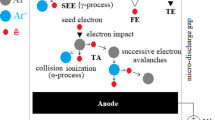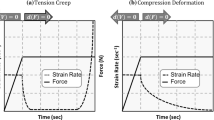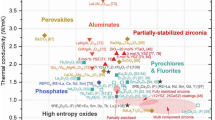Abstract
The electrolytic current in an aluminum smelter can amplify resonant motions on the Al–electrolyte interface, producing a circulating wave that can grow out of control. Thick electrolyte layers prevent this magnetohydrodynamic metal pad instability (MPI) but sacrifice efficiency because the electrolyte is a poor conductor. In high-fidelity simulations of a TRIMET 180 kA smelter, we found that adding an oscillating component to the current prevented the MPI and replaced it with stable standing waves. We also found that initiating an oscillating current component can halt the MPI in progress. In our simulations, stable operation with steady current required a 4.3-cm anode–cathode distance (ACD), but stable operation with oscillations was achieved at 3.8 cm ACD, with heat power reduced by 12% and overall power by 4%. Different frequencies or amplitudes might allow further ACD reduction. Our method could allow Al production at lower cost, with less energy, and a smaller carbon footprint.






Similar content being viewed by others
References
I.A. Institute, Aluminium sector greenhouse gas pathways to 2050 (IAI, 2021), https://international-aluminium.org/resource/aluminium-sector-greenhouse-gas-pathways-to-2050-2021/. Accessed from Jun 2021
B. Gates, How to Avoid a Climate Disaster: The Solutions We Have and the Breakthroughs We Need (Alfred A Knopf, New york, 2021)
M. Gautam, B. Pandey, and M. Agrawal, Environmental Carbon Footprints (Elsevier, Amsterdam, 2018), p. 197
P.A. Davidson, Mater. Sci. Technol. 16, 475 (2000). https://doi.org/10.1179/026708300101508027
T. Sele, Metall. Trans. B 8, 613 (1977). https://doi.org/10.1007/BF02669338
V. Bojarevics and M. Romerio, Eur. J. Mech. B 13, 33 (1994)
P.A. Davidson, Eur. J. Mech. B 13, 15 (1994)
P.A. Davidson and R.I. Lindsay, J. Fluid Mech. 362, 273 (1998). https://doi.org/10.1017/S0022112098001025
O. Zikanov, A. Thess, P.A. Davidson, and D.P. Ziegler, Metall. Trans. B 31B, 1541 (2000). https://doi.org/10.1007/s11663-000-0039-6
A. Lukyanov, G. El, and S. Molokov, Phys. Lett. A 290, 165 (2001). https://doi.org/10.1016/S0375-9601(01)00653-3
N. Urata, Essential Readings in Light Metals (Wiley, New Jersey, 2013), p. 373
N. Urata, Essential Readings in Light Metals (Wiley, New Jersey, 2013), p. 330
W. Herreman, C. Nore, J.-L. Guermond, L. Cappanera, N. Weber, and G.M. Horstmann, J. Fluid Mech. 878, 598 (2019). https://doi.org/10.1017/jfm.2019.642
G. Politis and J. Pried, J. Fluid Mech. 915, A101 (2021). https://doi.org/10.1017/jfm.2021.100
A. Pedcenko, S. Molokov, and B. Bardet, Metall. Trans. B 48, 6 (2017). https://doi.org/10.1007/s11663-016-0840-5
A.D. Sneyd and A. Wang, J. Fluid Mech. 263, 343 (1994). https://doi.org/10.1017/S0022112094004143
J. Gerbeau, C. Le Bris, and T. Lelièvre, Mathematical Methods for the Magnetohydrodynamics of Liquid Metals (Oxford University Press, Oxford, 2006), p. 251
A. Lützerath, Light Metals 2013 (TMS, Warrendale, 2013), p. 659
M. Dupuis and V. Bojarevics, Analyzing the impact on the cell stability power modulation on a scale of minutes (Aluminium Smelting Industry, 2021), pp. 54–57. Accessed from Jun 2021
V. Bojarevics and J.W. Evans, Light Metals 2015 (TMS, Warrendale, 2015), p. 783
D.H. Kelley and I. Mohammad, Systems and methods for energy efficient electrolysis cells (WIPO, 2021). https://patentscope.wipo.int/search/en/detail.jsf?docId=WO2021163142&_cid=P12-KTERWI-60301-1. Accessed from Jun 2021
G.O. Linnerud and R. Huglen, Method for electrical connection and magnetic compensation of aluminium reduction cells, and a system for same (WIPO, 2006). https://patentscope.wipo.int/search/en/detail.jsf?docId=WO2006033578. Accessed from Jun 2021
J. Chaffy, B. Langon, and M. Leroy, Device for connection between very high intensity electrolysis cells for the production of aluminium comprising a supply circuit and an independent circuit for correcting the magnetic field. https://patents.justia.com/inventor/joseph-chaffy. Accessed from Jun 2021
M. Dupuis, A new aluminium electrolysis cell busbar network concept, ICSOBA (2015). http://www.genisim.com/download/A%20new%20aluminium%20electrolysis%20cell%20busbar%20network%20concept.pdf
S. Akhmetov, J. Blasques, and M.I. Faraj, Potline retrofit to increase productivity under energy supply constraints. In: 12th Australasian Aluminium Smelting Technology Conference (Queenstown, New Zealand, 2018)
N. Weber, P. Beckstein, W. Herreman, G.M. Horstmann, C. Nore, F. Stefani, and T. Weier, Phys. Fluids (2017). https://doi.org/10.1063/1.4982900
G.M. Horstmann, N. Weber, and T. Weier, J. Fluid Mech. 845, 1 (2018). https://doi.org/10.1017/jfm.2018.223
O. Zikanov, Phys. Rev. E. 92, 063021 (2015). https://doi.org/10.1103/PhysRevE.92.063021
A. Allanore, L. Yin, and D.R. Sadoway, Nature 947, 353 (2013). https://doi.org/10.1038/nature12134
D. Sadoway, Apparatus for electrolysis of molten oxides (WIPO, 2008). https://patentscope.wipo.int/search/en/detail.jsf?docId=WO2008016526
V. Bojarevics and K. Pericleous, Time dependent electric, magnetic and hydrodynamic interaction in aluminium electrolysis cells. In: Fifth International Conference on CFD in the Process Industries (Melbourne, 2006). https://www.cfd.com.au/cfd_conf06/PDFs/129Boj.pdf
V. Bojarevicsa and K. Pericleous, Jim Evans Honorary Symposium (TMS, Warrendale, 2010), pp. 199–206
V. Bojarevics and K. Pericleous, Light Metals 2009 (TMS, Warrendale, 2009), pp. 569–574
V. Bojarevics, E. Radionov, and Y. Tretiyakov, Light Metals 2018 (TMS, Warrendale, 2018), pp. 551–556
R. Shaoyong, Y. Feiya, M. Dupuis, V. Bojarevics, and Z. Jianfei, Light Metals 2013 (TMS, Warrendale, 2013), pp. 603–607
Acknowledgements
The authors are grateful for fruitful discussions with Riccardo Betti, Curtis Broadbent, Gerrit M. Horstmann, and Jonathan S. Cheng.
Author information
Authors and Affiliations
Corresponding author
Ethics declarations
Conflict of interest
The authors declare that they have no conflict of interest.
Additional information
Publisher's Note
Springer Nature remains neutral with regard to jurisdictional claims in published maps and institutional affiliations.
This work was supported by the National Science Foundation (CBET-1552182) and by a University of Rochester, URVentures TAG award.
Supplementary Information
Below is the link to the electronic supplementary material.
Supplementary file 2 (mp4 11196 KB)
Supplementary file 3 (mp4 6231 KB)
Supplementary file 4 (mp4 9767 KB)
Supplementary file 5 (mp4 10828 KB)
Supplementary file 6 (mp4 10460 KB)
Rights and permissions
About this article
Cite this article
Mohammad, I., Dupuis, M., Funkenbusch, P.D. et al. Oscillating Currents Stabilize Aluminum Cells for Efficient, Low Carbon Production. JOM 74, 1908–1915 (2022). https://doi.org/10.1007/s11837-022-05254-8
Received:
Accepted:
Published:
Issue Date:
DOI: https://doi.org/10.1007/s11837-022-05254-8




